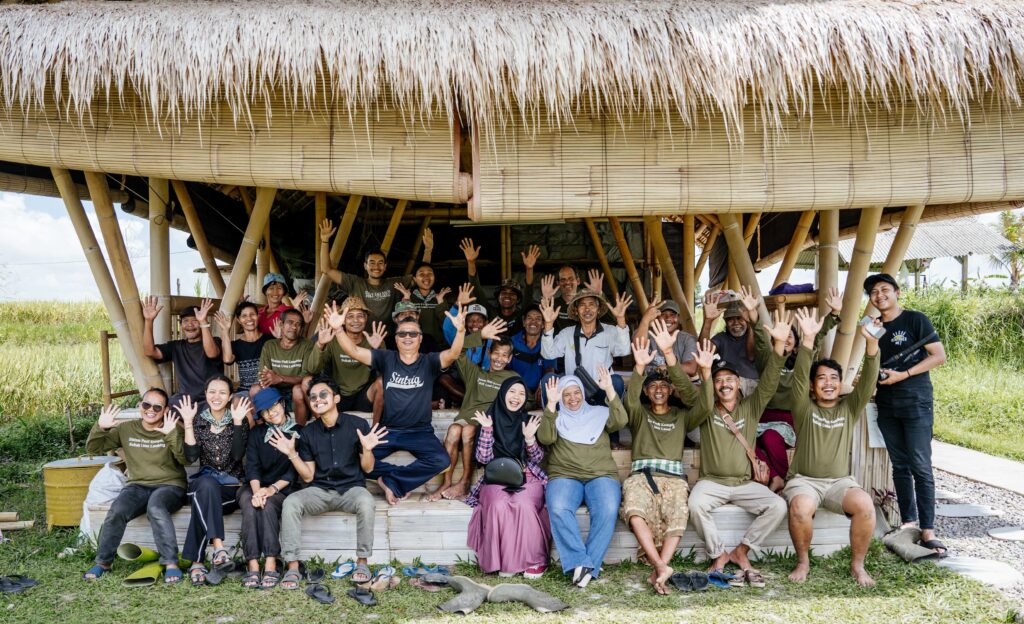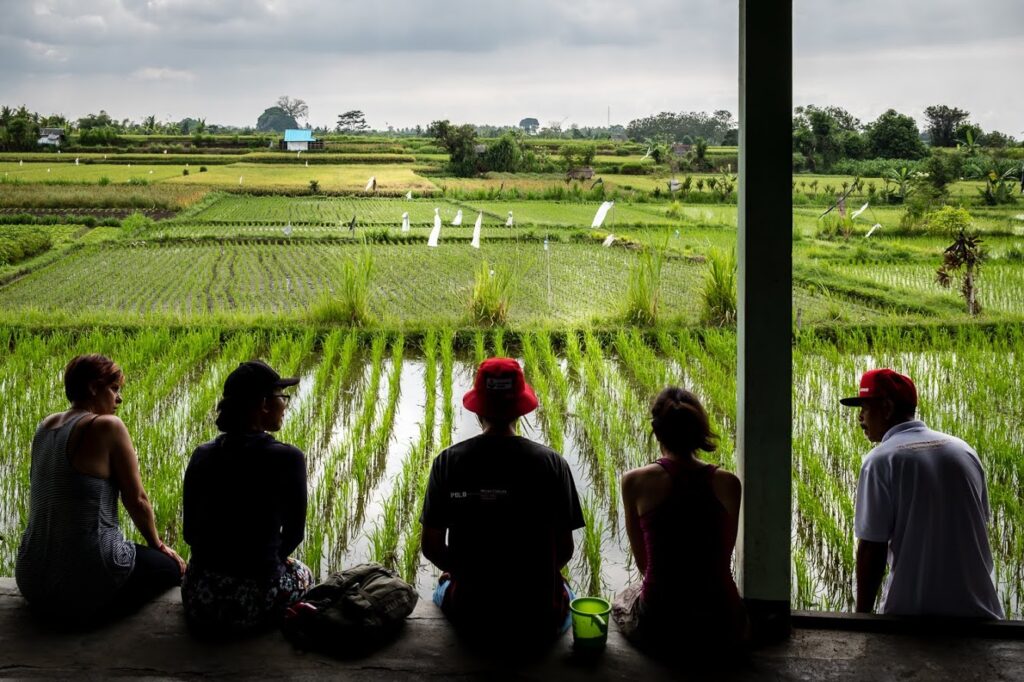Astungkara Way: The Rice Path to a Sustainable Bali
Astungkara Way is spearheading a regenerative movement across the island of Bali, Indonesia, by combining regenerative travel and farming. Its original initiative is the Astungkara Trail, Bali’s first coast-to-coast walking trail which crosses the island from south to north on a 135-kilometer arc. It offers visitors an experience of how communities can live sustainably, in harmony with nature and closer to the source of their food.
Travelers will hear farmers’ stories of how their ancestors used to practice “Tumpang Sari,” or intercropping, and how rice paddies were populated with fish, free-roaming ducks, and eels that they used to catch at night. But they’ll also learn that the way rice is typically farmed now means that it is inherently unsustainable.

The Trail is Astungkara Way’s vehicle for engaging with local communities, understanding their challenges and needs and supporting their regenerative practices. Inspired by the Balinese word “Astungkara,” meaning “hopefully” or “god-willing,” the initiative is driven by the urgent need to restore ecosystems on the island.
Indeed, Astungkara Way’s second and main initiative is to develop regenerative farming programs with these communities along the Trail. Their first such program is focused on regenerative rice farming.
Conventionally farmed rice, still a staple food for over 3.5 billion people across the world, is now among the crops most susceptible to the extreme wind, rain, drought and pest outbreaks associated with climate change. With the gradual erosion of nutritional value due to poor soil, what was once a miracle crop has become one of the most urgent challenges to global food security.
Now, Astungkara Way’s rice farming initiative has become the largest movement in Bali to support farmers to transition from conventional to regenerative rice cultivation through a pioneering rice cultivation method called Complex Rice Systems (CRS).
Increasing overall farm productivity by integrating diverse plant and animal species to enhance soil health and rice yield, CRS mitigates the challenges of pests and disease without chemical interventions. The initiative claims that the CRS approach also provides secondary cash crops and subsistence crops for farmers and their families who have previously relied on monocrops, resulting in almost tripling available income for households within a year. The ultimate goal is to reinstate the viability of farming as a profession, especially for the next generation of farmers.

Astungkara Way says the CRS method has already demonstrated better rice grain yields in neighboring East Java than organic farms, with on average 133% higher results within two years. They believe CRS could be a viable model for most smallholder rice farmers, who face challenges with organic farming due to a lack of access to high-quality compost and high labor demands. According to studies, 78% of Indonesian rice farmers who are enrolled in organic farming programs will revert back to chemicals within two years because of these challenges—which the initiative claims CRS is able to mitigate.
Astungkara Way is collecting detailed economic, social, and environmental impact data to demonstrate that regenerative rice farming is not simply an alternative, but actually the most viable method of producing a crop that our species depends on. The initiative’s goal is to build a working model of regeneration across an entire island that receives international attention, to create a beacon of hope. It aims to address immediate agricultural challenges and build a sustainable, scalable blend of innovation, tradition, and ecological stewardship in rice farming that can be adopted globally.
Learn more about Astungkara Way.
Written by Gilly Smith
Photos provided by Astungkara Way
